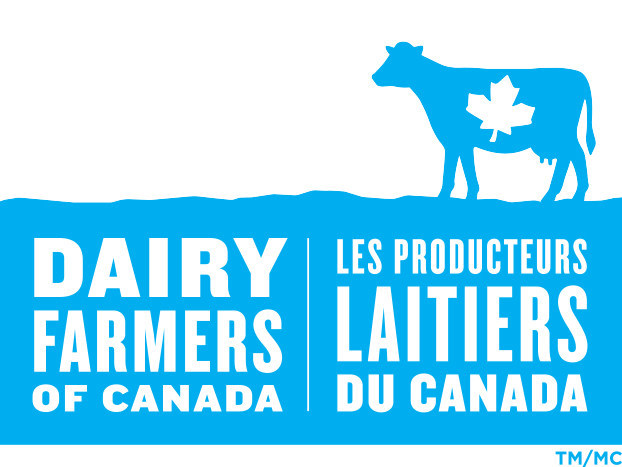Reducing the Water Footprint of Milk in Current and Future Climates
Complete

Project Overview
This research addressed key priorities for the dairy sector, including sustainable water and effluent management and adaptation to climate change. The project aimed to understand dairy-farm water use, examine heat stress indicators, and use global climate data to model potential impacts of climate change on heat stress in the future.
What Did the Research Team Do?
Measured in-barn water use: Extensive data were collected on the amount of water used for cleaning and drinking.
Examined runoff around dairy farms: Bunker silo effluent was examined to better understand its impact on local phosphorus load and the utility of a novel slag filter on a farm in southern Ontario.
Measured and projected indicators of heat stress: Temperature and humidity sensors were installed in and around barns across nine farms to compare indoor and outdoor conditions; climate change scenarios and historical weather data were used to project estimated indicators of heat stress until 2080; and assessments were conducted to evaluate heat stress mitigation and reduction strategies.
What Did the Research Team Find?
In-barn water use:
- Water use benchmarks (L water used / Kg milk produced) were developed for summer and winter and for tie-stall, milking parlors, and robotic milking systems
- Updated benchmarks for milking systems showed tie‐stall barns used 21.8 L/cow/day; milking parlors used 25.8 L/cow/day, and robotic milking systems used 40.3 L/cow/day, on average.
Runoff around dairy farms:
- Collection and treatment of bunker silo runoff with a slag filter (iron with gravel pit) has been shown to be highly effective and durable.
Heat stress:
- Barn design influenced how fast barns cool down in the evening; mechanically ventilated and insulated barns were cooler.
- Climate change models show substantial increase in the number of days of in‐barn heat‐stress conditions in 2050s and 2070s at all locations.
- Both historical observations and future projections indicate the largest increases in the magnitude and duration of heat stress occur in Ontario.
**Scroll down for project communication outputs**
Principal Investigators
Andrew VanderZaag
Agriculture and Agri-Food Canada (Ottawa)
Robert Gordon
University of Windsor
Co-Investigators
Roland Kroebel
Agriculture and Agri-Food Canada (Lethbridge)
Merrin Macrae
University of Waterloo
Édith Charbonneau
Université Laval
Véronique Ouellet
Université Laval
Terra Jamieson
Agriculture and Agri-Food Canada (Halifax)
Ward Smith
Agriculture and Agri-Food Canada (Ottawa)
Budong Qian
Agriculture and Agri-Food Canada (Ottawa)
Key Words
- Water use, climate change, heat stress, effluent
Period: 2018-2023
Budget: $667,085
Last Updated: January 16, 2024
Note: As per the research agreement, aside from providing financial support, the funders have no decision-making role in the conduct of the studies, data collection, and analysis or interpretation of the data. Researchers are independent in conducting their studies, own their data, and report the outcomes regardless of the results. The decision to publish the results rests entirely with the researchers.
PROJECT COMMUNICATION OUTPUTS
ANIMATED VIDEO
What Do We Need to Know About Managing Bunker Silo Effluent?
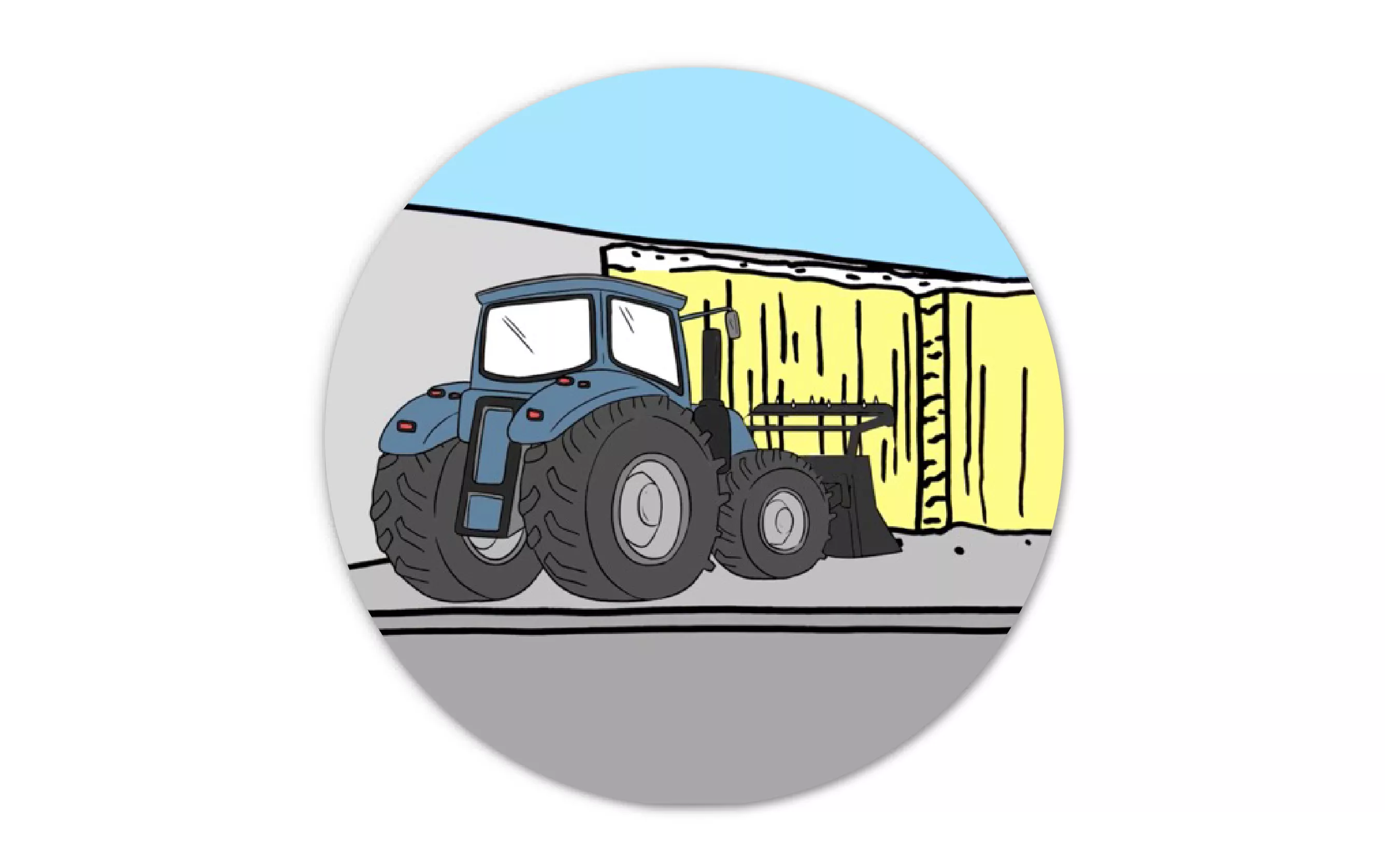
WEBINAR
Reducing the Water Footprint of Milk Production
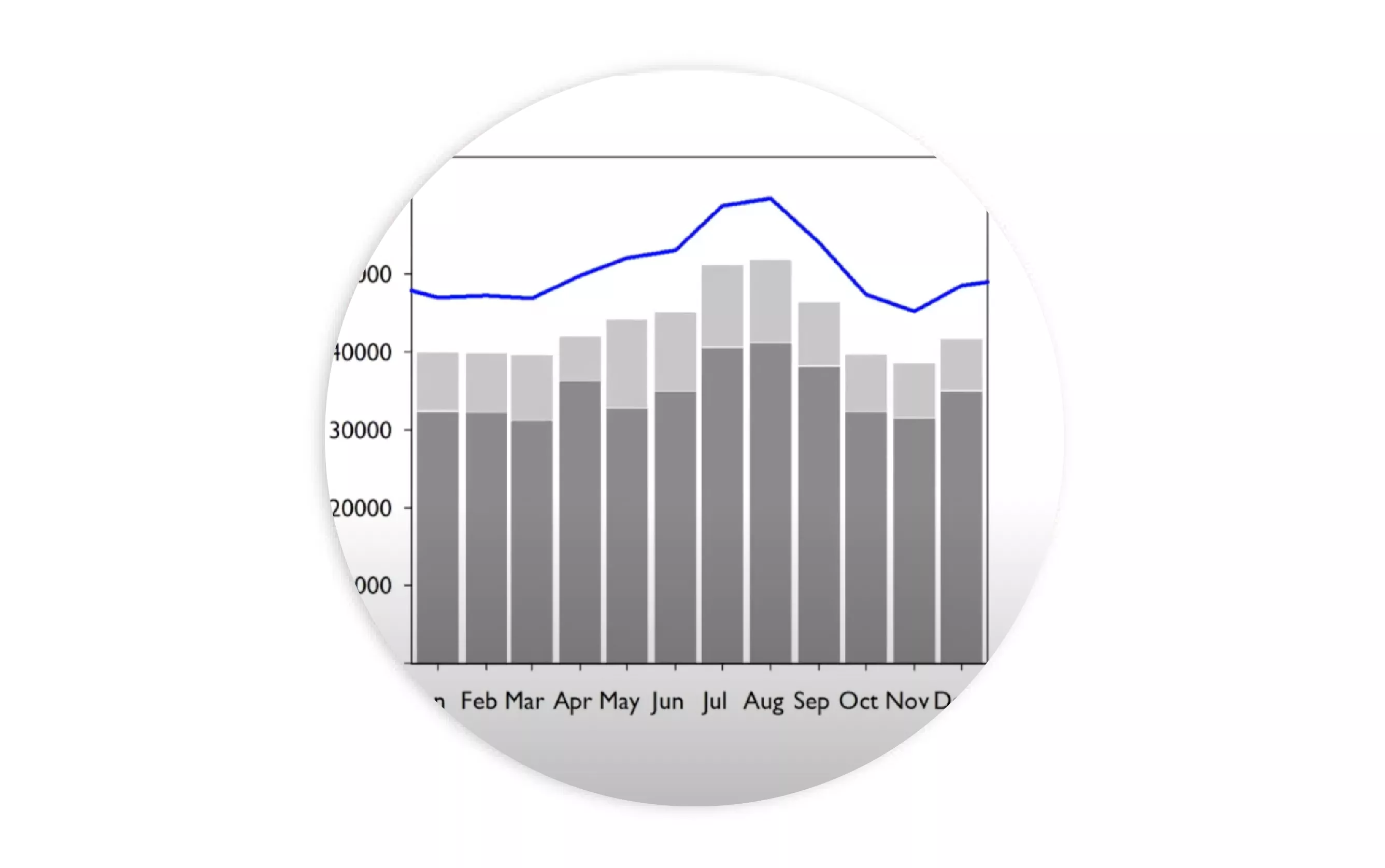
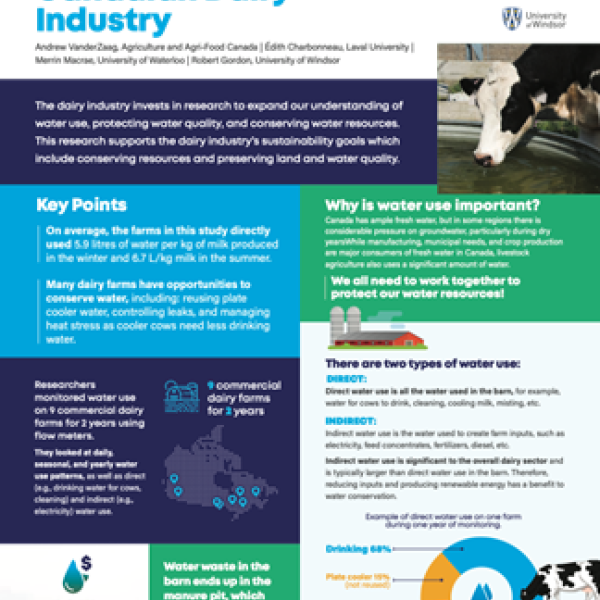
Infographic
DOWNLOAD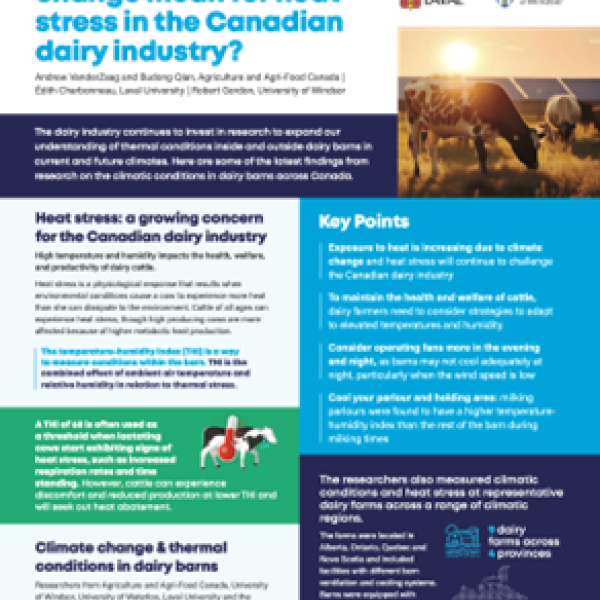
Infographic
DOWNLOADPROJECT PUBLICATIONS
-
VanderZaag, A., E. Le Riche, B. Qian, W. Smith, H. Baldé, V. Ouellet, É. Charbonneau, T. Wright, R. Gordon. 2023. Trends in the risk of heat stress to Canadian dairy cattle in a changing climate. Can. J. Anim. Sci. 00: 1-15. https://doi.org/10.1139/cjas-2023-0040
-
Pluer, W.T., J.M. Plach, A. Hassan, D. Price, M.L. Macrae. 2022 Retention of phosphorus in soils receiving bunker silo effluent. J. Environ. Manage. 323, 116147. https://doi.org/10.1016/j.jenvman.2022.116147
-
VanderZaag, A., E. LeRiche, H. Baldé, S. Kallil, V. Ouellet, E. Charbonneau, T. Coates, T. Wright, P. Luimes, R. Gordon. 2023 Comparing thermal conditions inside and outside lactating dairy cattle barns in Canada. J. Dairy Sci. 106(7): 4738. https://doi.org/10.3168/jds.2022-22870
-
Al-Bahouh, M., V. Osborne, T. Wright, M. Dixon, A. VanderZaag, R. Gordon. 2021. Blue water footprints of Ontario dairy farms. Water 13: 2230. https://doi.org/10.3390/w13162230
-
Mohsenimanesh, A., E.L. LeRiche, R. Gordon, S. Clarke, R.D. MacDonald, I. MacKinnon, A. VanderZaag. 2021. Review: Dairy Farm Electricity Use, Conservation, and Renewable Production - A Global Perspective. Appl. Eng. Agric. 37(5): 977. https://doi.org/10.13031/aea.14621
-
Price, D.W., J.M. Plach, H.P. Jarvie, M.L. Macrae. 2021. Contribution of bunker silo effluent discharged via a riparian zone to watershed phosphorus loads. J. Great Lakes Res. 47(5): 1296. https://doi.org/10.1016/j.jglr.2021.08.004

